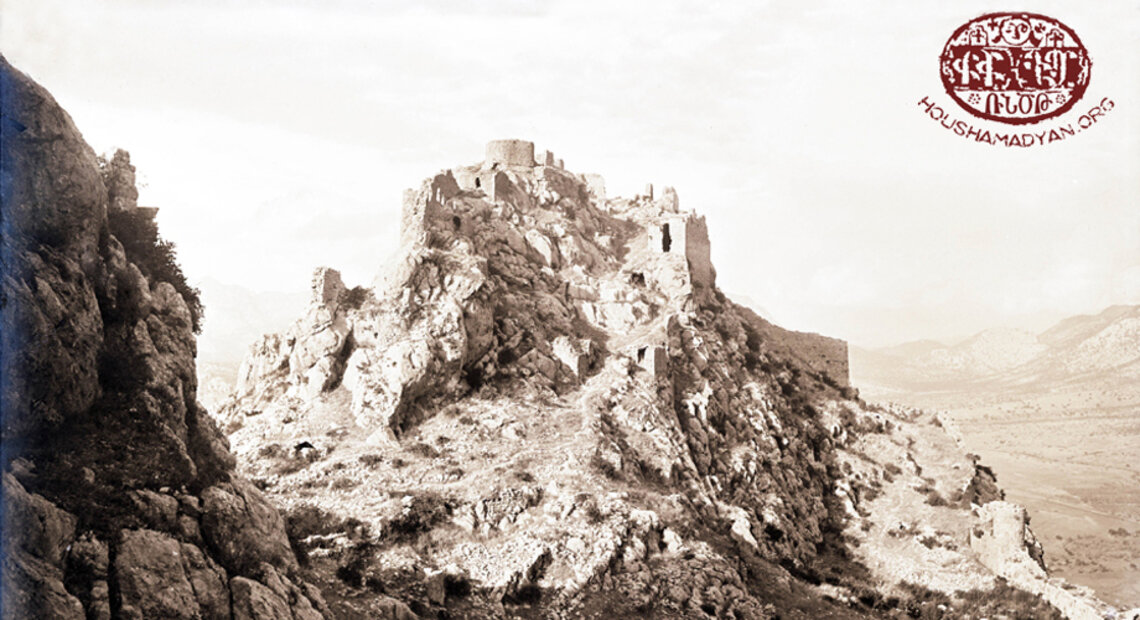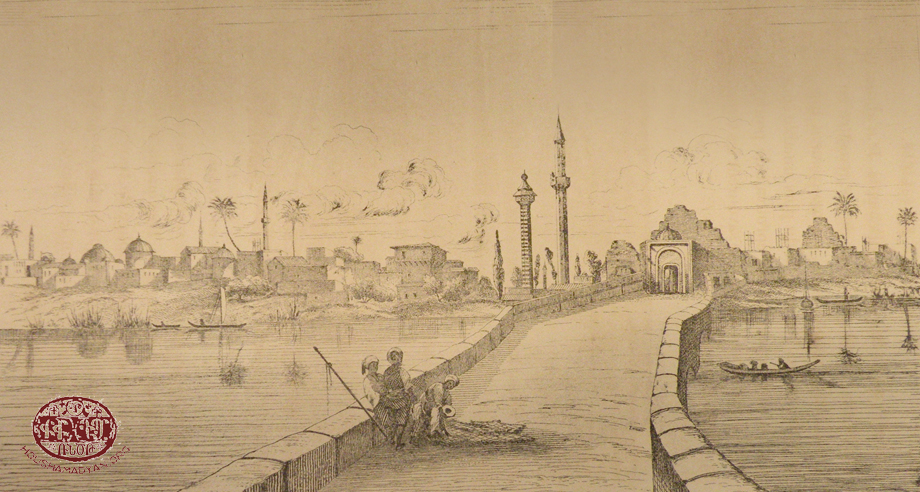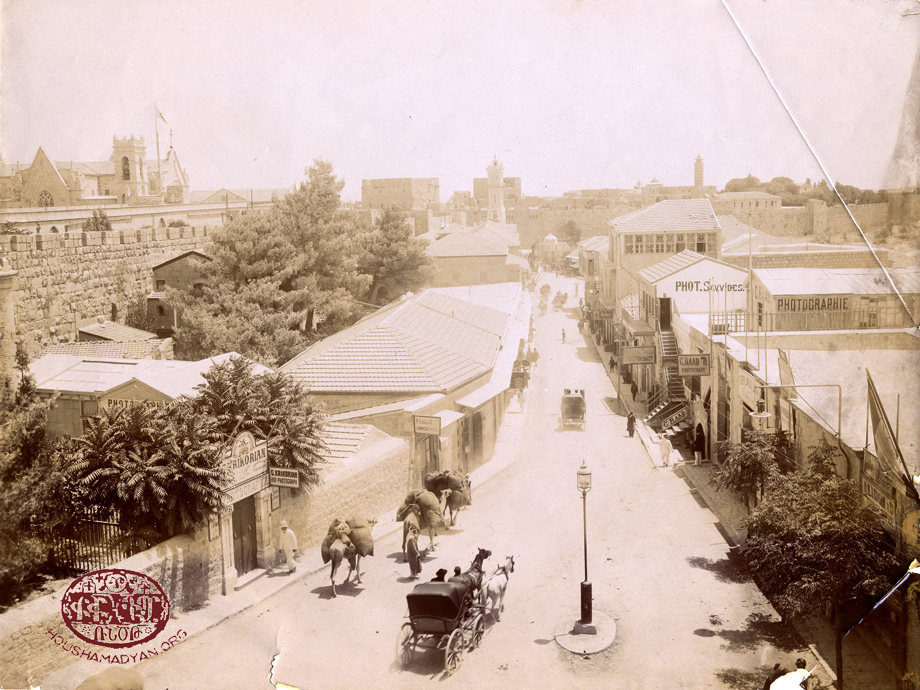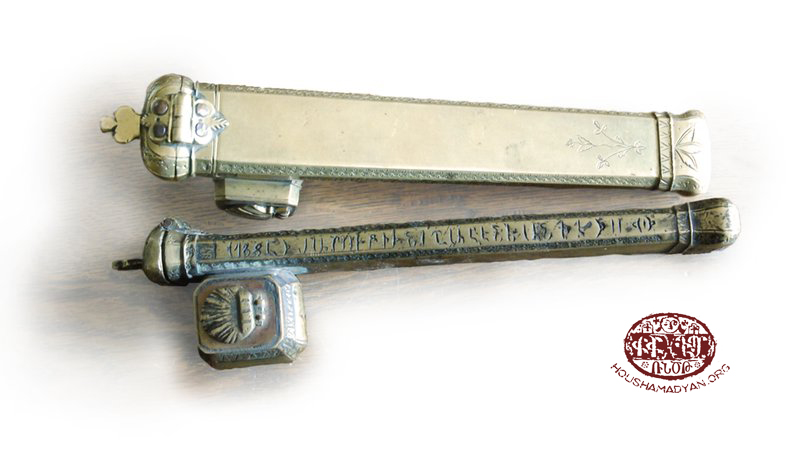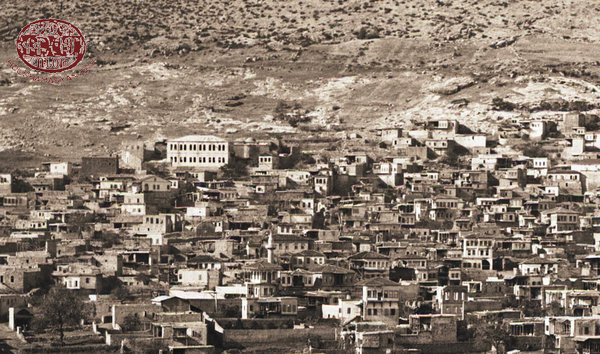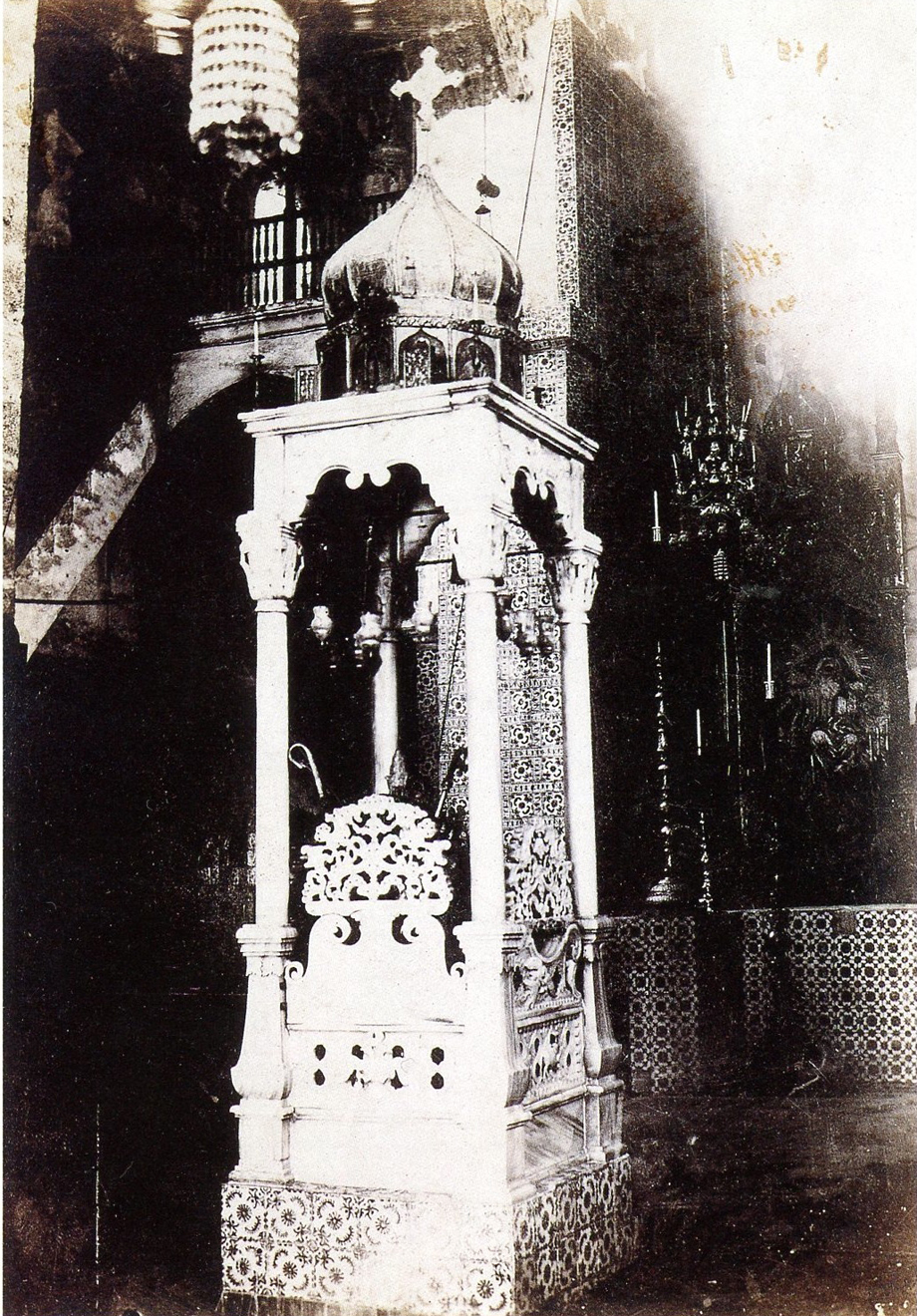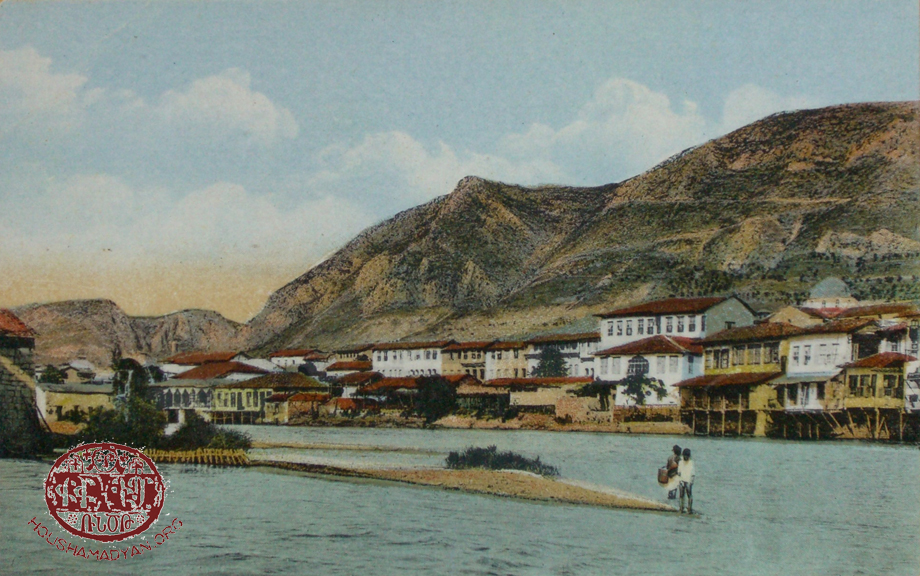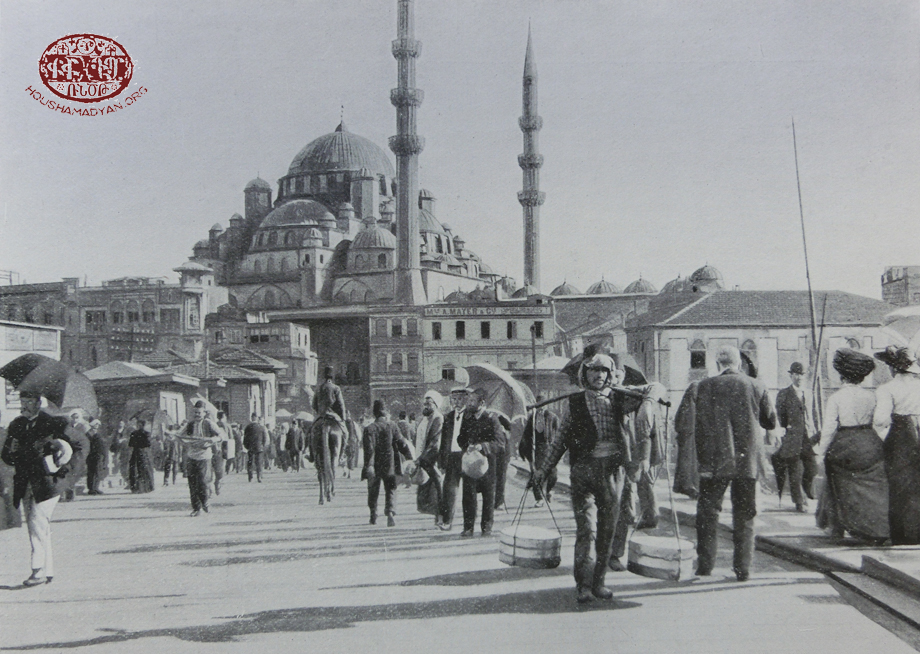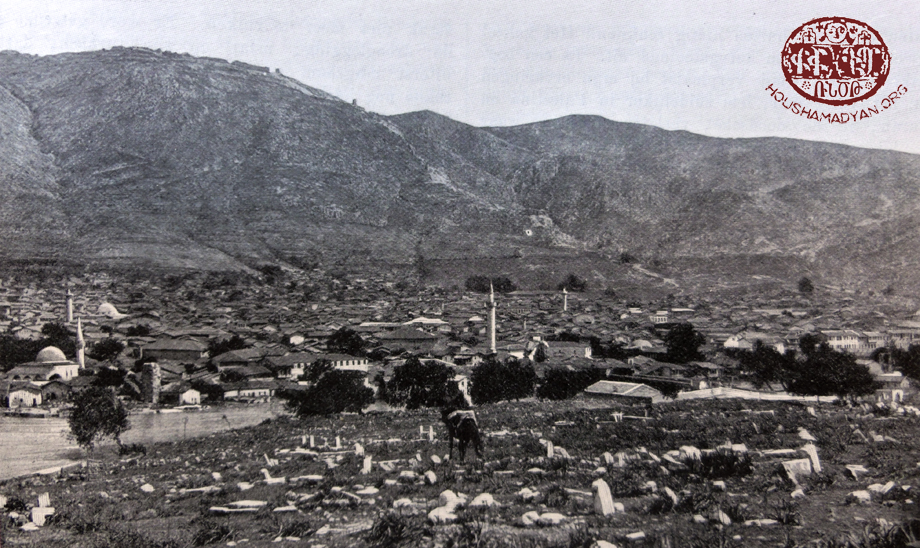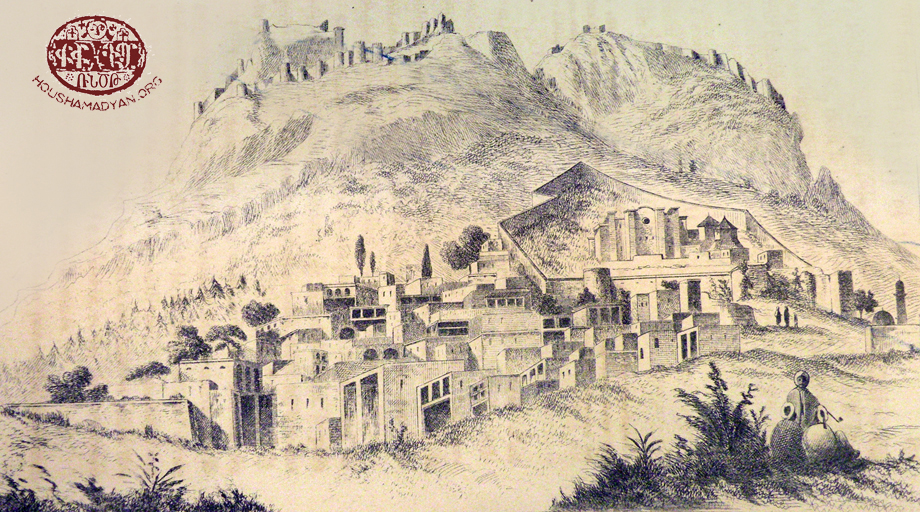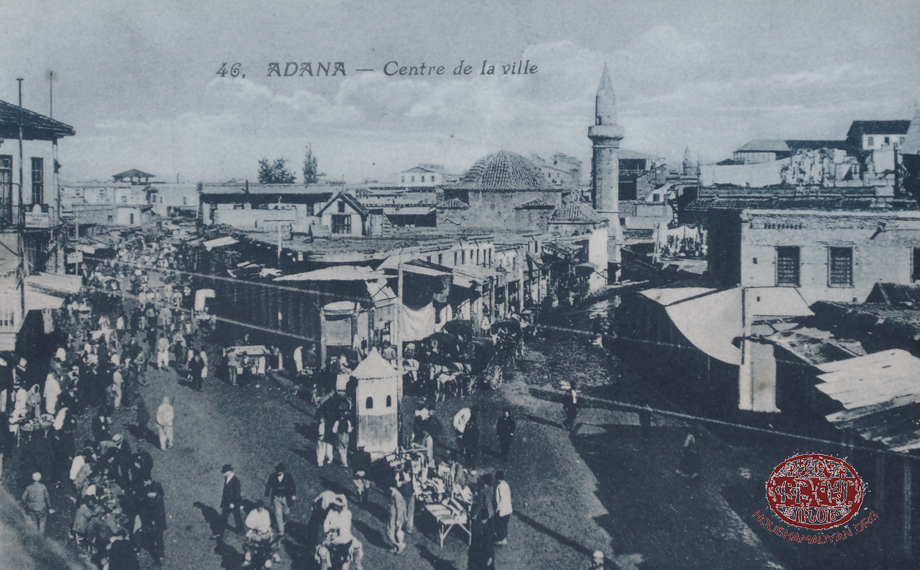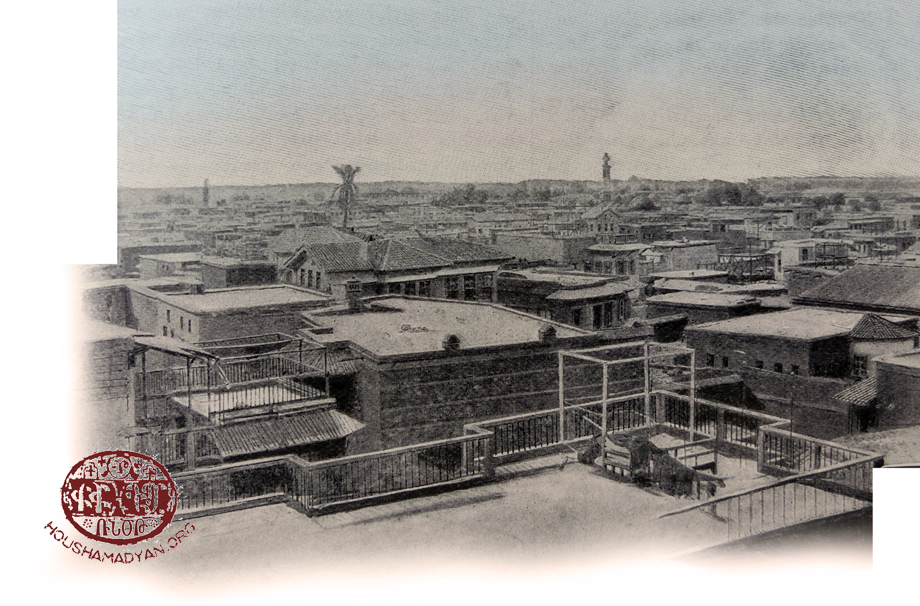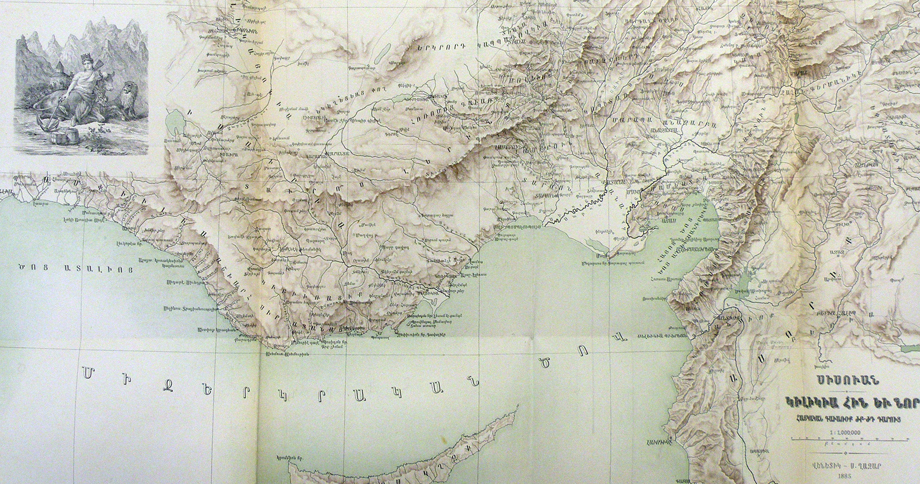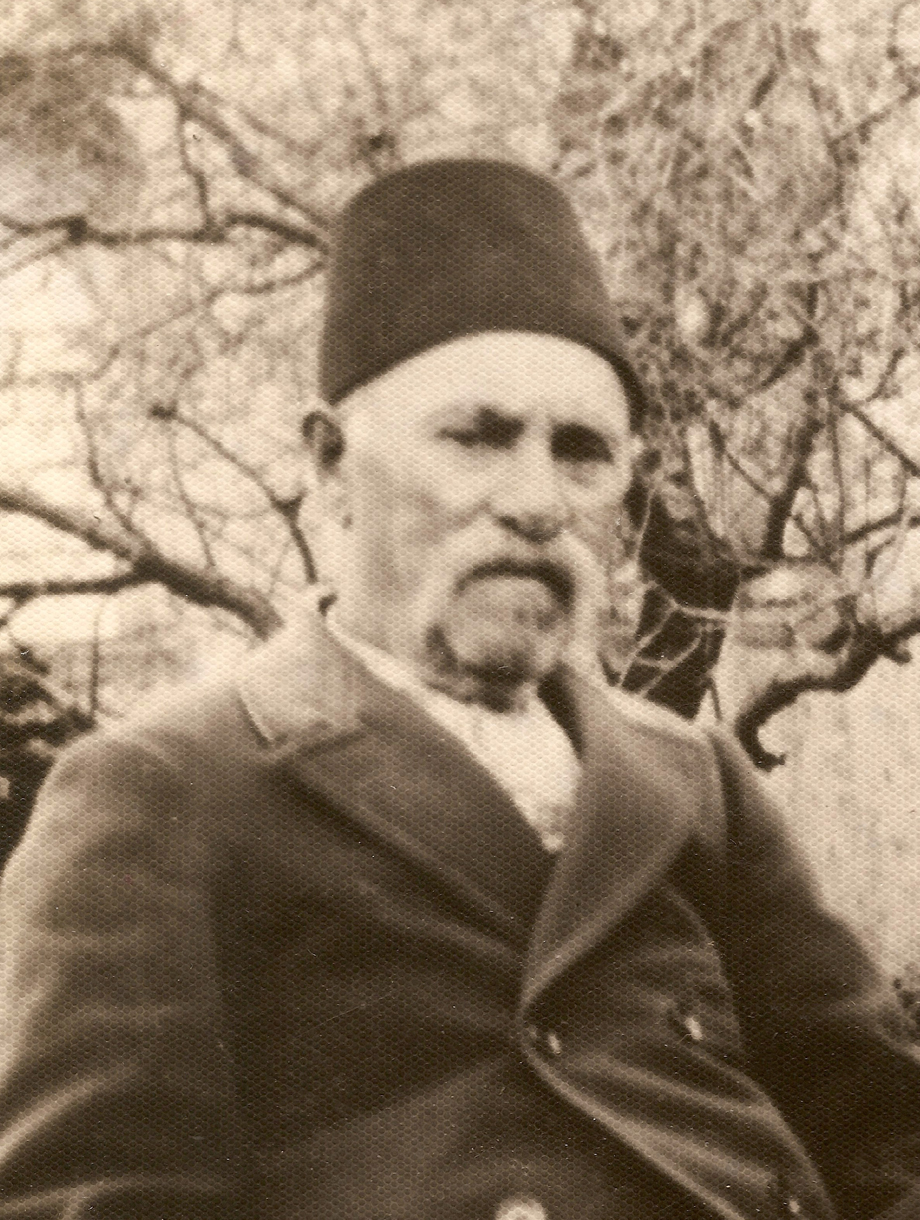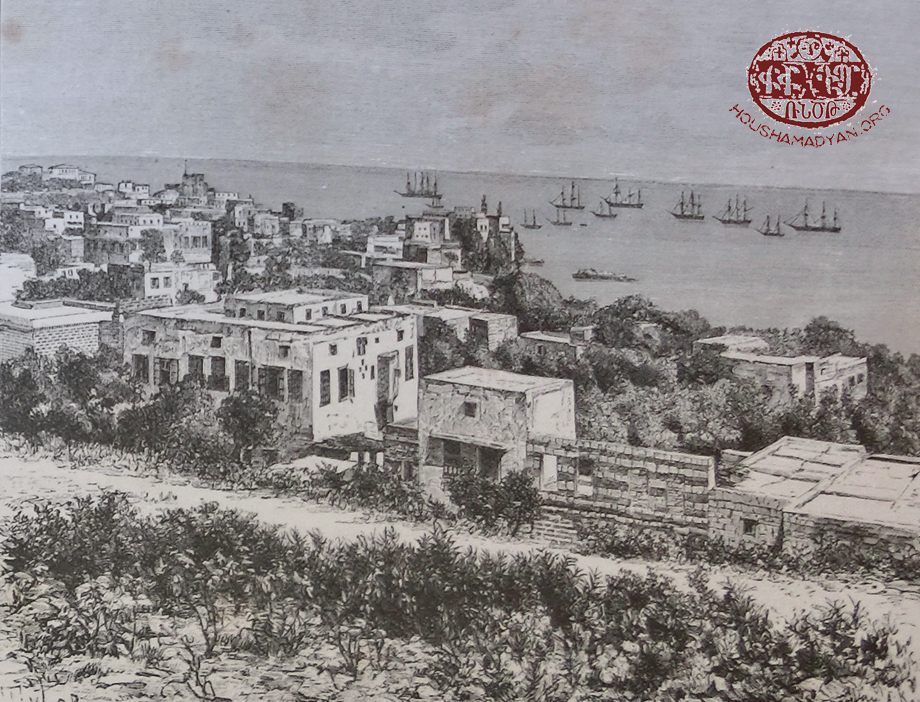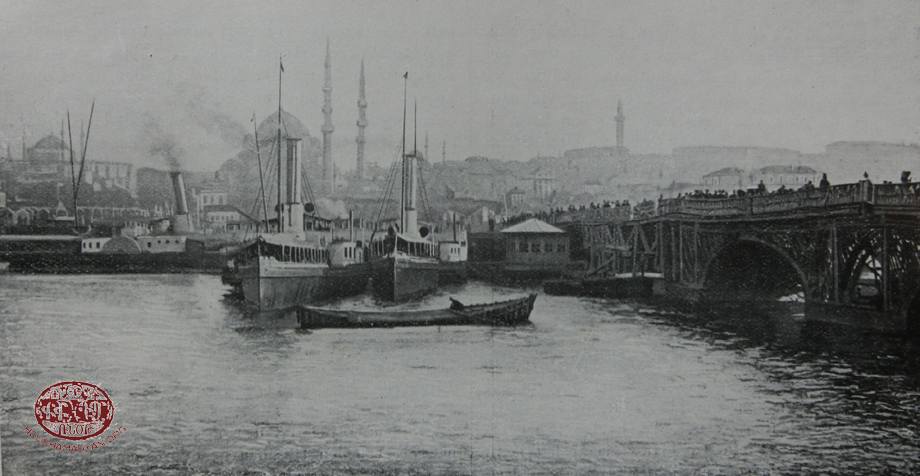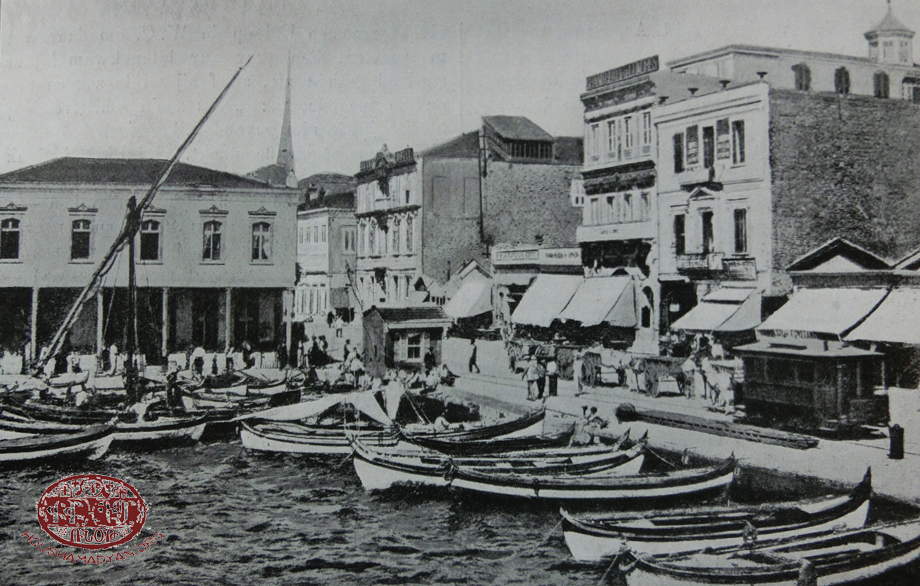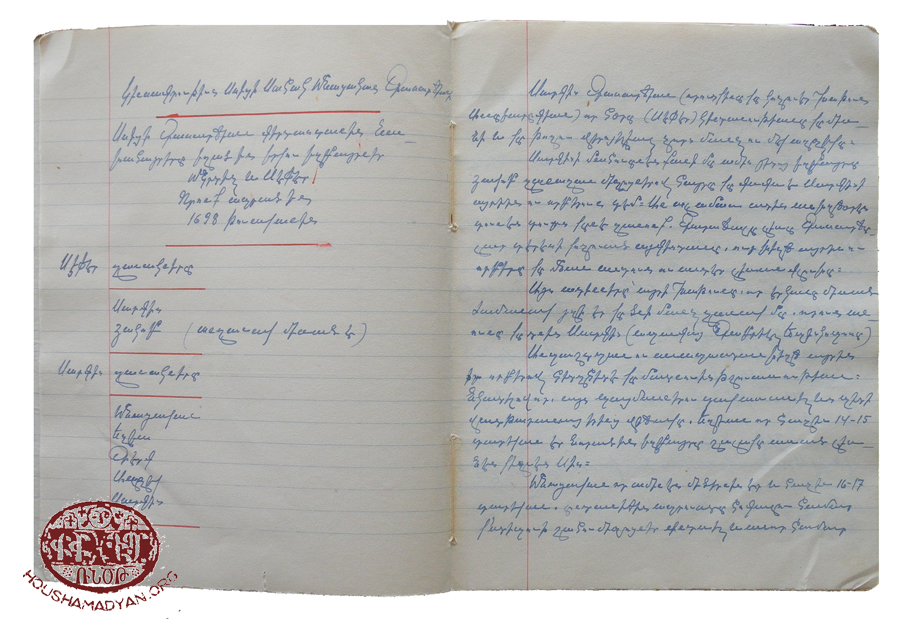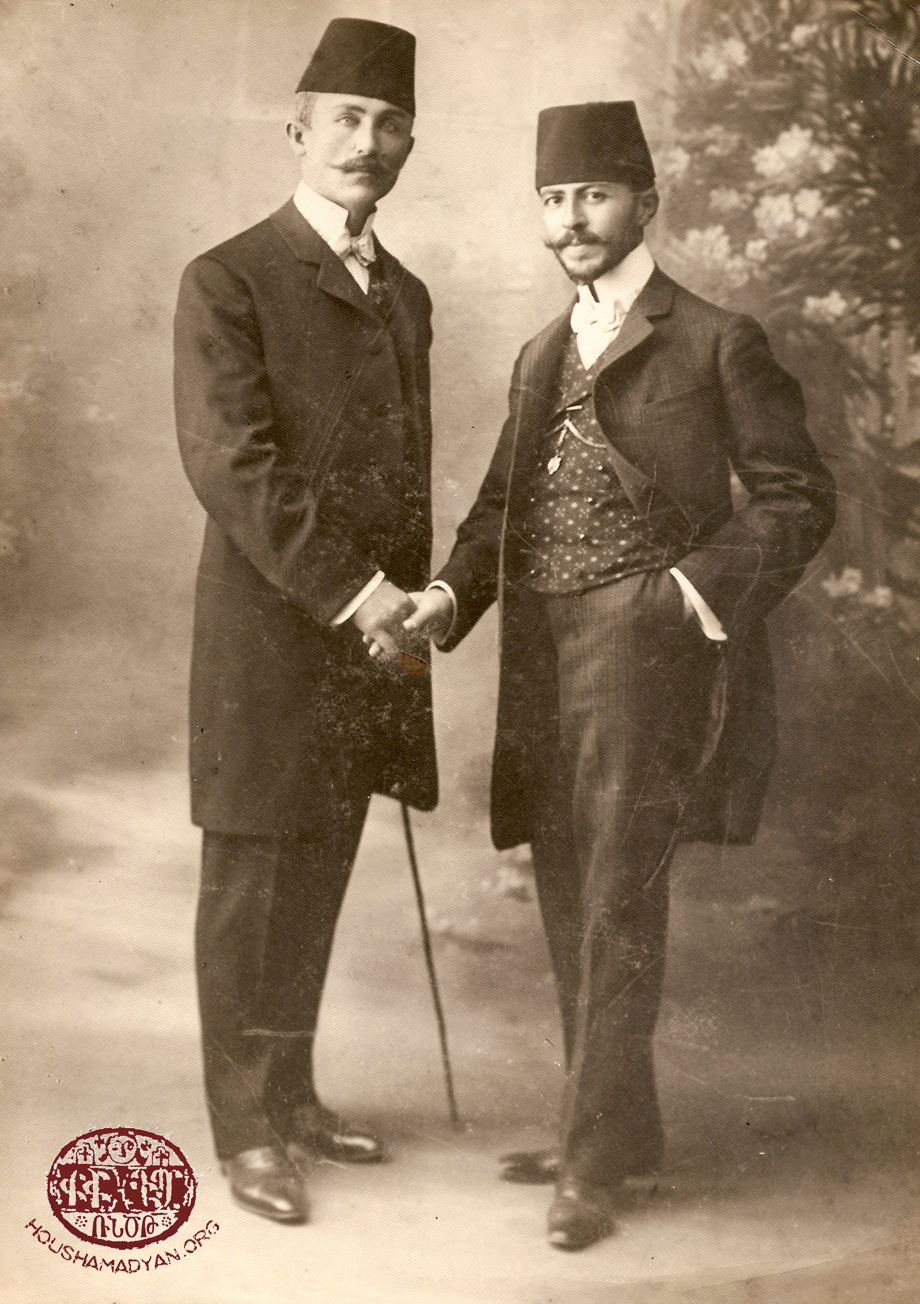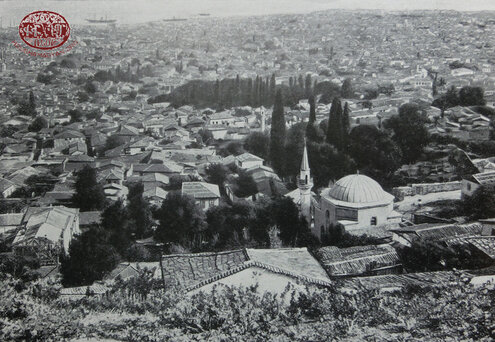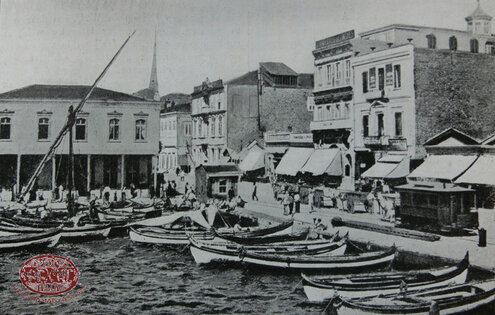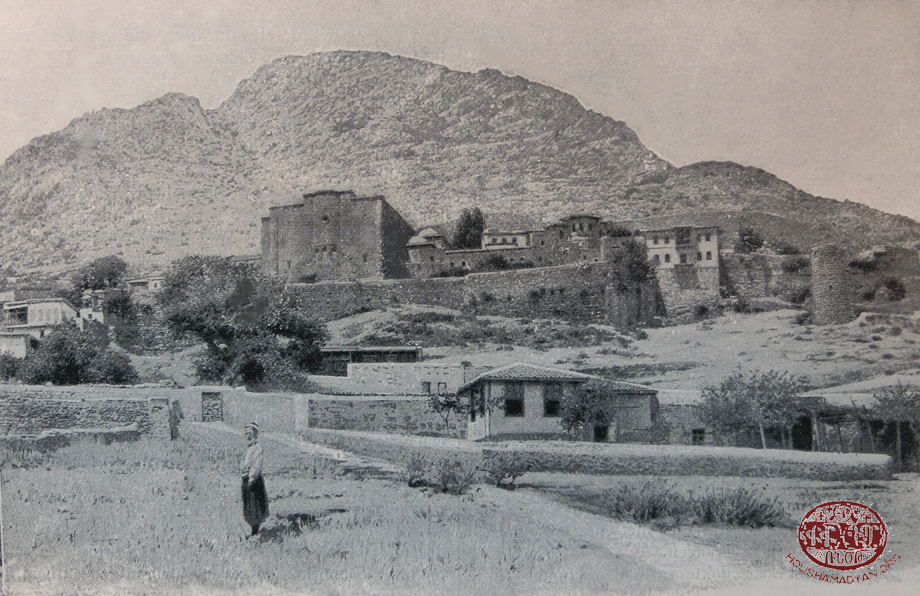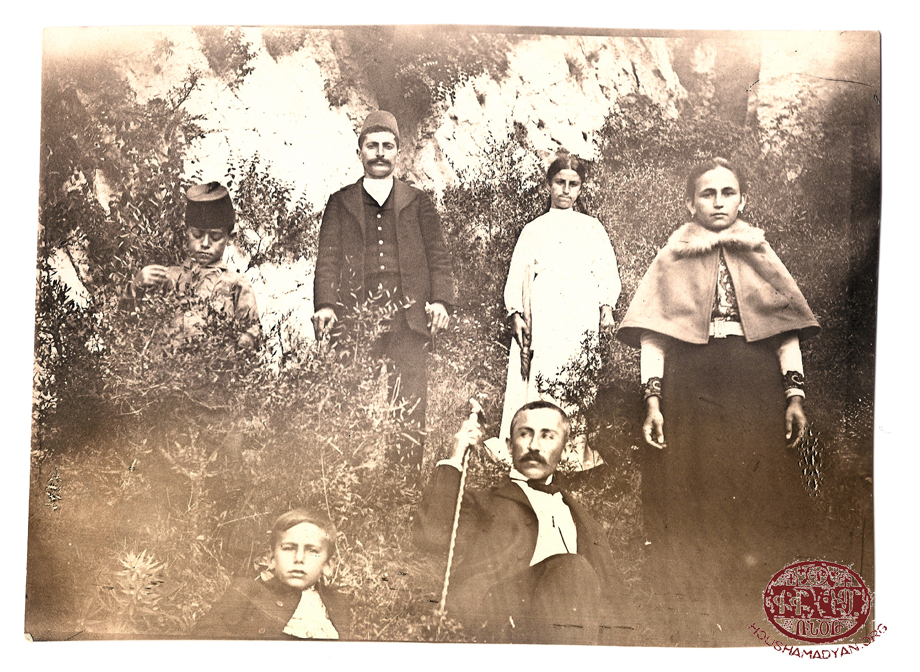Biography of Sahag Mnatsagan Kasardjian from Sis (1840-1912)
Author: Sahag Kasardjian (Last modified 29/11/2015)- Translator: Hrant Gadarigian

Editorial note
The memoirs of Ashod Kasardjian are divided into different chapters. Family related diaries, presented below, are an important part of these papers. Ashod Kasardjian titled this portion, “Biography of Sahag Kasardjian of Sis”. Sahag was Ashod’s father and this diary is mostly his father’s biography covering 1840-1912. The diarist also provides much information about other family members. The Armenian used by Ashod Kasardjian is simply styled and comprehensible, in places using the local dialect and the sentence structure is sometimes weak. Houshamadyan has tried to preserve the uniqueness of Kasardjian’s Armenian. We have only made various spelling corrections. We have also simplified sentences that have a complex structure and thus hard to comprehend. Except for spelling and some punctuation corrections, the other changes we have made are noted in brackets. By adding certain dates and explanations, we have attempted to make the chronicle a bit more comprehensible. Such additions are also placed in brackets and noted by the abbreviation ed. (editor).
Through a simple diary about family life, Ashod Kasardjian conveys rich information regarding the history of Sis (present-day Kozan), the daily life of local Armenians, and social, political, cultural and economic developments in the area. While the major players are men and the entire narrative is based on the activities of men in the family, nevertheless, in places, we come across important information regarding the Kasardjian family women. There are also interesting observations about Ottoman officials and local Armenian educational life. Perhaps the most interesting chapter of the work is the description of the Kasardjian family’s trading business. Sahag Kasardjian is the main actor throughout the memoir. He was a “mover and a shaker” and registered a number of business successes in a short time. It was due to his economic prowess, perhaps, that he rose to become a prominent Armenian in Sis and won a number of local appointments. In this memoir, we thus see how members of an Armenian family managed their commercial affairs in a small town like Sis. We can follow how their commercial affairs developed. We can tag along on business trips to Constantinople, Beirut, Smyrna, and as far away as Manchester, and see how branches of the family business were established. Finally, we see how the family’s trading house went bankrupt.

Two brothers, Mgrdich and Sefer, who lived (in the 17th and 18th centuries), are said to be the forefathers of the Kasardjian clan from Sis.
Sefer had two sons, Sarkis and Hagop. Sarkis’ children were Mnatsagan, Yeghia, Kevork, Sarkis and a daughter (whose name is unknown). Sefer died childless.
Sarkis Kasardjian (whose wife was Khatoun Annuyarukian), who died while his father (Sefer) was still alive, left the four boys and one girl noted above.
A few months after the death of Sarkis, his brother Hagop turned their father against Sarkis’ widow and orphaned children. He heartlessly threw them out of the house during the winter. The poor widow and kids were left homeless in a field called Kasardjular Deresi.
Widow Khatoun was pregnant when her poor husband died. She gives birth to a boy who is named Sarkis (the future Bishop Kapriel).
Defenseless and with no refuge, the poor widow and orphans gradually fall into hard times. Seeing that the family’s situation could only get worse, Yeghia, only 14-15 years-old at the time, carries his new born brother down the mountain to Sis.
Mnatsagan, the oldest child at 16 or 17, is forced to travel to Adana to look for work in order to take care of the family. For a time he works as a weaver, and when he gets settled and makes some money, he brings his brothers there. They remain in Adana for seven or eight years. They all grow up during those years.
Mnatsagan goes to Jerusalem on a pilgrimage. On the way back he gathers his brothers and they return to Sis. This was the time, [1832-1840], when Egypt’s Ibrahim Pasha captures Cilicia.
A bit later, Mnatsagan marries Tshkho, the daughter of Lek Panos of Sis. While the exact date isn’t known, their first child, Sahag, was probably born in 1838 and baptized by Father Der Haroutiun Mkhitarian. Kevork agha Pekmezdjian served as godfather.
This Kevork agha was also called Divitli. At the time there were few who knew how to read and write. Divit, in Turkish, means inkwell. [He was called divitli because he was literate; ed.]
Sahag Kasardjian started his studies at the age of 5-6 at the knee of Chavdar Oghlu and a bit later with priest Der Krikor Achabahian. He begins to learn reading, grammar and the Psalms. During this time the father, Mnatsagan, dies at the Karadjalu Akpounar country house and is buried at the Aykesdan cemetery. He was 35-36 year-old.
A bit later, Mnatsagan’s wife (Sahag’s mother) Tshkho marries a man called Aserian Mser. Sahag and his brother Panos stay with the uncles Yeghia and Kevork.
When Sahag was 8 or 9, a man called Cholak Seto opens a school in one of the rooms in the old St. Nshan Monastery (Sis residents called it the ‘old’ monastery). There had been no school in Sis up till then. It was due to Cholak Seto that the foundations were laid for an Armenian school and that Armenian children were collected to get a very basic, but Armenian education, for a few years. It was at this school that Sahag read the Psalms, the New Testament, the Book of the Apostles, and learnt to read in general. At the time, speaking in Armenian and translating didn’t exist. Cholak Seto learnt the fundamentals that he knew from Constantinople Bishop Hovhannes, the tutor of Catholicos Giragos.
Sis, circa 1920: In the center of the photo, a bit to the left, is a large two story structure with many windows. This was the National School (Azkayin Varjaran). Directly to the right is the Old Monastery (Hin Vank) with its small dome (Source: photograph by Father Gabriel Bretocq, Archives départementales de l’Eure, Fonds Gabriel Bretocq)
Sarkis’ youngest son was named Sarkis as well [he was named after his father; ed.]. He was born after the death of his unfortunate father. His mother, Khatoun, had made a vow that if the child was a boy, he would be handed over to the Catholicos to get an education and become a clergyman. Thus, the boy Sahag was handed over to Catholicos Mikayel (1833-1855).
He (Sarkis), being a diligent and forward looking boy, was ordained a celibate priest at the age of twenty by Catholicos Mikayel Achabahian and appointed the primate of Antioch.
Residents of Antioch liked him a lot and a few years later he was ordained Bishop Kapriel in Sis. Sadly, not much later (probably due to jealousy) there are those who betray the Catholicos and quarrels break out amongst them. Being an upright and affable person by nature, he is offended by the unpleasant acts of the Catholicos and leaves for Lebanon.
After staying for a while in Lebanon, he goes to Constantinople during the tenure of Patriarch Hagopos [Hagopos Seropian III, 1839-1840, and 1848-1858; ed.] Later on, he is sent to Adana as the primate based on an imperial edict (firman). He is escorted by Tateos Vartabed, the Vicar of Patriarch Hagopos.
Catholicos Mikayel reconciles with him and again sends him to Antioch as primate. A year later he [Bishop Kapriel] travels to Sis for the blessing of the Holy Muron. On the way back [to Antioch] he also takes Sahag, who was 10-11 at the time, with him. He learns grammar and other things from his cousin Mr. Krikor Libaridian.
A year later, after refusing the position of Antioch Primate, [Bishop Kapriel] travels to Sis and then to Zeytoun. After staying there a few months, he goes to Gesaria/Kayseri, Yozgat, Ankara, Izmit and Armash by way of Hadjin and remains in those places for 5-6 months on the order of Patriarch Hagopos. Sahag was with him at the time and continues to study. Later, Bishop Kapriel goes to Constantinople where he stays for one month. Upon the order of the Patriarch he is ordained Primate of Tamzara and Hazbder (or Atzbder) [is this the name of a monastery perhaps?; ed.] in 1850 and stays there until 1865. During this period, Sahag develops his education even more by himself.
Given that Catholicos Mikayel dies and is succeeded by Catholicos Giragos Manuelian II [1855-1866], Bishop Kapriel is again ordained the Primate of Adana and takes the families of the brothers Yeghia and Kevork, in Sis at the time, to Adana during the reign of Sultan Abdülmecid I (1839-1861).
An adult, Sahag thinks about his future and feeling that he has no calling for the clergy and will not be able to follow church regulations and rules, wants to and decides to engage in commerce. Accordingly, he starts to trade in small items in 1859. Here, in passing, I am saying what I always heard from my father (Sahag). [Here, the memory writer quotes his father; ed.]
“A man named Aslan rents a store to Sahag at the mouth of the Adana bridge. He buys various agricultural implements to sell, meses and other similar things, as well handkerchiefs and manifactura [manufactured goods, textiles, and woven goods – ed.]. In one day he sells one thousand handkerchiefs in the Adana Charshuh market at a profit of one metalik, or 300 ghroush.”
In Turkey, the Charshuh bazar was generally only opened on Tuesdays. In Turkish they would say Saluh bazaar. People would bring their village made goods and town shopkeepers would bring their merchandise to the bazaar for sale.
This is the way he started out in business. Who is Aslan? He is the brother of Mser Aserian, whom Sahag’s mother married, and who took great care of Sahag.
In a short time Sahag, due to his cleverness and the assistance of Aslan, amassed 30 Ottoman gold pieces and continuing his work increased his capital to 50-60 pieces and wanted to marry. But sadly his uncle, Bishop Kapriel, was debilitated by diarrhea and died on September 28, 1860 and was buried near the wall to the right of the St. Asdvadzadzin Church in Adana. The grave was built from marble.
A year later 23 year-old Sahag marries Mariam, the twelve year-old daughter of Kapriel agha Tatian from Sis, on February 20, 1861. Father Sarkis, pastor of the St. Asdvadzadzin Church in Adana, does the honors. The godfather is Ghasab Bedros agha. The wife of Bedros agha was called Varvar Djedjeh. The couple had adopted my uncle Panos’ future wife Maritza hashoug [in the local dialect – bride; ed.].
My uncle, Panos agha, was staying with them and they liked him as a son. In the end, they married off the two. “Even though I was quite young [here the narrator is Avedis, the older brother of the narrator; ed.], I remember quite well that Mr. and Mrs. Ghasab Bedros came to Sis and stayed for a long time in the house of my uncle.”
Sahag continued to work in commerce.
In 1863-1864, the Ottoman government sent müşir (field marshal) Dervish Pasha and Djevdet Efendi, who later became minister of justice, to the region of Kozan to improve conditions there. (They) arrest the despot and rebel Kozan Oghlu Ahmed Beg and take him to Constantinople. [1]
Due to the war between England and America at the time [1861-1865; ed.], the price of cotton rises and one oka [1 oka=1.28 kilos; ed.] sells for up to 5 French gold pieces. That’s to say a liter (4 oka) goes for one French gold piece. For this reason the Turks called it the fransuz lirasuh senesi [year of the French lira; ed.]
Cholera breaks out in Adana at the time and many die. They too [Sahag’s people; ed.] are forced to flee Adana with their families and go to Khan Deresi until the cholera epidemic passes. Yeghia’s twins, Vartevar and Asmin are born there. After growing up, if Vartevar did a wrong thing my father [Sahag; ed.] would say ekiz eshi (the crooked twin). Asmin would later be married off to Vasilian Artin.
After the cholera passed [Sahag’s people; ed.] returned to Adana. Once there, they see that their birthplace [Sis] has been improved due to the Ottoman government’s reforms, and in 1865 the entire clan relocates to Sis. Sahag uses the 100 Ottoman gold pieces he’s brought from Adana to engage in the manufactured goods trade in the Eski Charshuh market.
In 1866, he joins forces with Bedigian Garabed agha and the two continue trading.
In 1867, Sahag’s first born child Tina dies. On September 27 of the same year Dikran is born and is baptized in the St. Sarkis Church by Father Krikor Pasluian. Garabed agha Bedigian is the godfather.
Aslan Pasha is appointed mutasarrıf [governor; ed.] of Sis. He implements a number of improvements in the town. First, he initiates the construction of a market in a new style of the day. He also lays the groundwork for a new neighborhood on the flat area of the castle’s exterior section. It is called the Aslan Pasha neighborhood until today.
In the same year Bedigian Garabed agha dies, after which Sahag founds a new company with his brother Garabed. But he too dies within 5/6 months. The prominent individuals of Sis hold a meeting and take a detailed look at the general financial reports of the company. As a result, (Sahag) sells the full rights to the property of the deceased and gets an affidavit signed by those attending the meeting. The sale price of the goods amounts to 60,000 ghroush.
At this time, Aslan Pasha relocates to Marash and is replaced by Vehib Pasha from Aleppo [as governor; ed.]. In his tenure, in 1870, Sahag builds a new home in a large courtyard, in the Aslan Pasha neighborhood and near the new market. He teams up with his brother Panos and they continue in commerce. They become partners on the basis of two shares of the profits and capital to Sahag and one to Panos.
During these days, Vehib Pasha leaves and Suleiman Bey replaces him. His first priority is to develop agriculture and he’s very helpful in this regard. He likes Sahag very much and appoints him to the idareh [probably idare meclisi, governing council; ed.] when Sahag is 32.
During the tenure of this pasha, Bishop Mgrdich Kefsizian from Marash is ordained the Catholicos of Sis [1871-1894; ed.]. But the Catholicos and the council don’t like each other and are always disagreeing. As a consequence of this confrontation, Suleiman Bey is dismissed and is replaced by Emin Pasha from Kayseri. This man likes him (Sahag) even more and again brings a buyruldu [directive/order; ed.] for membership in the council from Adana governor Mahmoud Nedim Pasha [1818-1883], who was the former sadrazam (grand vizier) [1871-1872 and 1875-1876]. Consequently, during the tenures of these two governors he has a brilliant position.
On March 20, 1871, Avedis is born and is baptized with Bedros Bedigian as godfather.
The mutasarrıf (governor) Emin Paha dies and is buried in the Turkish cemetery in Sis. Abdiul Kader Kemali Efendi arrives as his successor. This man likes Sahag even more and appoints him a member of the court with a monthly salary of 400 ghouroush in 1875, during the tenure of Judge Rüşdü Efendi.
It was during the governorship of Abdiul Kader Kemali, at the close of the Russo-Turkish War, that Kozan oghlou Ahmed Pasha flees Constantinople and again goes to Sis and rebels against the government. At the time, all the residents of Sis were at their summer homes. Some Muslims joined him. And the Armenians, out of terror, went to his side. But they secretly sent a man [to Adana] to Adana Prefect Ziya Pasha [1825-1880] and Governor Kemali Efendi. The man sent to Adana was a famous fighter of the day. The brave man was called Boghos agha Papazian, whose daughter, the beautiful Anna, later became the bride of Dikran. Sending this man to Adana proved very beneficial and honorable for Armenians in the eyes of the government.
In order to arrest Kozan oghlou yet again, müşir (field marshal) Izzet Pasha and Djevdet Pasha came with 10 battalions of soldiers and after a few insignificant battles they captured Kozan oghlou Ahmed Pasha and sent him to Constantinople. Also, 6-7 of his supporters were sentenced and sent to Salonica were they were jailed.
During this period, a scholar named Arif Efendi came to Sis as a judge, but unfortunately, not being able to agree with Kemali Efendi, he relocated to Djebeli Bereket with Prefect Ziya Pasha. Arif Pasha was succeeded by Riza Bey.
Ziya Pasha was the most famous poet of Turkish literature at the time and was known throughout Europe. Here we must recall the unique and courageous road this man travelled, and his efforts, in the name of freedom. He was exiled and dismissed from work several times but remained on the battlefield ramparts.
At the start of 1879, during the time of Riza Bey, several notables and the governor issued that a collection be taken in order to place schools on a more orderly and sound foundation. 15,000 ghouroush are collected and Riza Bey contributes 500 ghouroush of his own. The money is deposited, at interest, and the profit is used to put the schools on a sound footing.
At the end of the same year, upon the decree of Constantinople Patriarch Nerses [Patriarch Nerses Varjabedian, 1874-1884; ed.], the Miatsial Ungeroutiunk [an educational assistance organization founded in Constantinople and supported by the Patriarchate; ed.] opens a school in Sis and send Yesayi Efendi Boladian [or Poladian; ed.], a native of Göksu and a graduate of the Shahnazarian School as a principal-teacher. Dikran and Avedis were his pupils.
Seeing the satisfactory education received by the children and the well mannered environment in the schools, the people were able (to collect) 40,000 ghouroush. The amount was invested at interest. (In this way), the Miatsial Ungeroutiun was able to accept more than 40 pupils at the school. Sahag supervised all these efforts with utmost attention and care. As a result, the Miatsial Ungeroutiun’s school was of great benefit in the education of boys in Sis.
In 1880, they looked at the accounts of Panos. He, 82,000 ghouroush capital [receiving it he leaves the trading company; ed.]. They take their cousins Minas and Vartevar into the company, each with a 1/8 share. The new company last until the end of 1886. They tear down the old store in 1880 and build a maghaza [mağaza, large store; ed.] out of stone and lime in its place.
Dikran [Sahag’s son] graduates the four year school course at the end of 1882 and receives a diploma. In 1883, he works for several months as a teacher’s assistant.
On September 17, 1883, Dikran is sent to Constantinople with his uncle Panos. After returning, they open a hurdavat [small wares store; ed.] for Dikran that operates until July 1885. At this time, Dikran is again sent to Panos in Constantinople and sells all the goods to Ananian Kevorkian. In replacement, he buys tuhaf [clothing accessories, small articles; ed.] and general manufactured goods. Returning, Dikran is accepted into the business.
In July 1886, a review of the business accounts is made. Minas and Vartevar [leave the business after receiving their portion]. Thus, the business is left to the two brothers [Sahag and Panos; ed.]. Dikran assumes management of the business. On July 15 he leaves for Constantinople and Izmir. He buys items for the business and returns to Sis. At the end of September he also goes to Beirut. He essentially does the work of two.
On January 6, 1887, Christmas Day, another directive for court membership for Sahag arrives. This is during the tenure of Governor Emin Efendi who serves for four years straight as a member of the mehkeme (court) and one year in the governing council (idare).
In June of 1890, the accounts of the two brothers are inspected and the total profit up till then is 75,000 ghouroush; 45,000 to Sahag and 30,000 to Panos. Thus, a new mercantile company is formed on the stipulation described in the next paragraph.
The profit derived from the capital would be divided into three portions – one to Panos, one to Sahag and one to Dikran. Avedis gets an annual rent of one hundred (to be verified) medjidiye. Another stipulation regarding the founding of the company is that after operating for one year a financial review would be conducted to decide whether the company would be dissolved or continue operating.
In July 1891 the company is dissolved. Panos takes his capital and his one year share of the profit and leaves. He then starts his own business. Sahag and his two children, Dikran and Avedis, continue the business.
During the days of Yousouf Ziya Pasha there’s a new teşkilat [reorganization] and a committee (komision) is formed. Sahag is appointed its chairman. They conduct a tahrir on Sis tracts of land [land survey for taxation purposes], at very good rates. This happens in 1867-1869.
In 1873, during the period of the same Emin Pasha, the government is left with an ashar [aşar, tithe] and Emin Pasha appoints Sahag and Choulhadju Zade Mehmed agha to manage the matter for which they are paid 400 ghouroush a month each. (400 ghouroush was a lot of money back then) [The tithe was put up for auction. The person bidding the highest amount would then get the right to collect the ashar from the villagers. For some unknown reason, there was no auction winner that year; ed.]. The job lasts 10 months. Due to a light wheat crop that year, the price of one kaiv, that’s 25 okha [32 kilograms] increases by 60/65 ghouroush.
In 1884 a factory for refining cotton is built in the eastern part of Sis on the left bank of the stream (dereh) at a cost of 500 Ottoman gold pieces. Unfortunately, the factory is set afire one night in the spring of 1886 by certain jealous folk and completely burns down. [According to Ashod’s older brother Avedis] the four walls of the factory are still standing.
The lady of the house, Mariam (Sahag’s wife) dies on November 3, 1887 and is buried at the Kharab Bahcha (ruined garden) cemetery (in the eastern part of Sis).
Until that date, a traditional lifestyle dominated within the house, due to the lady of the house, who was like a gold crown on the head of her husband – industrious, an instructor of morality for the children, a model matriarch advisor to all members of the Kasardjian clan, sympathetic to all and loved. [Her death] left her husband, children, relatives and all friends in deep mourning.
The cause of her (premature) death was her child Hmayag, because after childbirth [Mariam] became frail. Hmayag’s sickly nature made her weak health even worse.
After her death, Hmayag was taken care of by Altoun, the daughter of Kasardjian Ghamber hashoug (bride), with help from Avedis and Pipeh [Sahag’s children; ed.]. Every day, especially in the evenings, they would take him [Hmayag] to the wet nurse for feeding.
On September 6, 1888, Sahag marries Nouritsa, the 17/18 year-old daughter of Panig agha from the Adana village of Abdi Oghlou. She gives birth to two children – Mleh and Maximilia. The marriage occurred when Dikran was in Constantinople.
In 1880, [Sahag’s] son Dikran was only 10-11 years old and was called to the trading house. At the age of 16 he‘s sent to Constantinople with his uncle Panos to make a purchase. Several years later, he goes by himself to bring back goods. A few years later, Sahag’s second oldest son, Avedis, also comes of age. [Afterwards] the two brothers, Dikran and Avedis, take turns going to Constantinople, Izmir and Beirut several times a year for purchases.
Dikran, while still at a young age, exhibits great skill and initiative in sales and in a short time is given the management of the trading house and several other businesses.
In 1896, during a time of general tribulation for Armenians and one year after the Zeytoun rebellion, concerned with safeguarding life and property, and feeling that the Sis region is too restricted for his wide-ranging business plans, he decides to find a much wider arena and regarding Beirut as the most convenient, he relocates there with his family. Here too, due to his cleverness, in a few years he’s publicly regarded as a leading merchant.
In 1899 he travels to Manchester, an English city with many factories, to purchase goods. He enters into a contract with the trading house of the wealthy Topalian brothers of Manchester, originally from Gürün, and for years does a trade in manufactured goods. The Beirut trading house was known as Dikran Kasardjian and Brothers, and the Sis and Adana branches as Sahag Kasardjian and Sons.
But tragically, the brothers managing the Adana branch, without the knowledge and consent of their father Sahag and [brother] Dikran, branch out into other large business ventures other than manufactured goods and soon amass great losses. The amount of losses and debt grew so much that, in the end, the two Kasardjian mercantile houses were declared bankrupt.
Immediately after the 1909 massacre [massacre of Armenians in the Adana area; ed.] Dikran leaves for the United States and takes his eldest child Drtad. A bit later, the brothers Ashod and Mleh, as well as Dikran’s second boy Berj, also went. [In the United States Dikran] wasn’t known by the surname Kasardjian, but by his father’s name, in other words Sahagian. In 1913, the entire family and Paylag and Gaydzag, the two boys of Dikran’s brother Avedis, also went together.
In 1929 [Dikran] died leaving $80,000 to the boys.
In 1923, Sahag’s son Avedis went to America with his family
In 1917, during WWI, Ashod served as a volunteer and went to Cilicia, never to return to the U.S.
Currently, Dikran’s sons, Avedis and his family, and Mleh and his family, reside in America. Also in America are Vartivar’s two boys, Souren and Oksen. The third child is in France. Vartivar’s sons carry the Kasardjian last name.
The boys of Panos, Diran and Bedros, and their families, reside in South America. The same is the case with Setrag’s son Zareh and his family (bearing the last name Kasardjian).

[1] These steps were part of the Ottoman government’s strategy to strengthen a counterbalance in these areas. This state initiative was called Fırkaı Islahiye (forced settlement) and one of the main targets was the Kozanoğlu tribe. This policy began in 1865 and continued until the 1890s. Ahmed Cevdet Pasha was given the job of resettling the tribes in the pasturelands and waging war against the Kozanoğlu tribe. Prior to this, he had held a post in Bosnia that also involved the resettlement of tribes. During the period of Sultan Abdülhamid, Cevdet headed the Ministry of Justice and then the Ministry of Internal Affairs. He then headed the Ministry of Foundations and the Ministry of Commerce. Derviş Pasha was the military commander of the “forced settlement” policy. (Meltem Toksöz, Nomads, Migrants and Cotton in the Eastern Mediterranean. The Making of the Adana-Mersin Region 1850-1908, Brill, Leiden/Boston, 2010, pp. 66-73).
